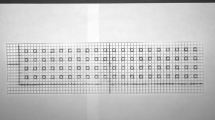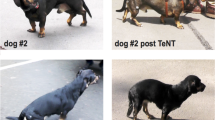Abstract
Introduction
Patients with spinal cord injury (SCI) and incomplete paralysis may experience muscle immobilization due to functional impairment of agonist and antagonist muscles. This can induce spasticity and pain, with the risk of contracture increasing as the period of immobilization increases. This could be aggravated by pain, which interferes with rehabilitation. There is no established treatment for pain and joint contractures caused by acute SCI. Botulinum therapy plays a role in relieving muscle tension. Here, we report a case of acute SCI in which botulinum therapy was administered.
Case presentation
The patient experienced a C5-cervical SCI due to a road traffic accident, with marked paralysis in the upper and lower limbs below the C5 level. The patient had persistent elbow flexion since the SCI and complained of excruciating pain, making adequate rehabilitation difficult. Botulinum toxin was administered to the biceps and brachialis muscles 15 days after the SCI. After administration, the patient experienced a reduction in pain with relaxation of the elbow flexor muscles, and rehabilitation treatment was resumed. This patient’s contracture did not worsen, his pain decreased, and he was able to initiate self-feeding training.
Discussion
In this case, occupational and physical therapy was administered with botulinum therapy. Together, they successfully reduced pain. Botulinum therapy provides analgesia and muscle relaxation and may lead to functional recovery, and we believe that treatment can be considered even in the acute phase.
This is a preview of subscription content, access via your institution
Access options
Subscribe to this journal
Receive 1 print issues and online access
We are sorry, but there is no personal subscription option available for your country.
Buy this article
- Purchase on Springer Link
- Instant access to full article PDF
Prices may be subject to local taxes which are calculated during checkout

Similar content being viewed by others
Data availability
The original data have been stored by the corresponding author and can be sent upon reasonable request.
References
Nas K, Yazmalar L, Şah V, Aydın A, Öneş K. Rehabilitation of spinal cord injuries. World J Orthop. 2015;6:8–16. https://doi.org/10.5312/wjo.v6.i1.8
Wang TY, Park C, Zhang H, Rahimpour S, Murphy KR, Goodwin CR, et al. Management of acute traumatic spinal cord injury: A review of the literature. Front Surg. 2021;8:698736. https://doi.org/10.3389/fsurg.2021.698736
Mourelo Fariña M, Salvador de la Barrera S, Montoto Marqués A, Ferreiro Velasco ME, Galeiras Vázquez R. Update on traumatic acute spinal cord injury. part 2. Med Intensiva. 2017;41:306–15. https://doi.org/10.1016/j.medin.2016.10.014
Hardwick D, Bryden A, Kubec G, Kilgore K. Factors associated with upper extremity contractures after cervical spinal cord injury: A pilot study. J Spinal Cord Med. 2018;41:337–46. https://doi.org/10.1080/10790268.2017.1331894
Harvey LA, Herbert RD. Muscle stretching for treatment and prevention of contracture in people with spinal cord injury. Spinal Cord. 2002;40:1–9. https://doi.org/10.1038/sj.sc.3101241
Diong J, Harvey LA, Kwah LK, Eyles J, Ling MJ, Ben M, et al. Incidence and predictors of contracture after spinal cord injury–a prospective cohort study. Spinal Cord. 2012;50:579–84. https://doi.org/10.1038/sc.2012.25
Siddall PJ, McClelland JM, Rutkowski SB, Cousins MJ. A longitudinal study of the prevalence and characteristics of pain in the first 5 years following spinal cord injury. Pain. 2003;103:249–57. https://doi.org/10.1016/S0304-3959(02)00452-9
Brown A, Weaver LC. The dark side of neuroplasticity. Exp Neurol. 2012;235:133–41. https://doi.org/10.1016/j.expneurol.2011.11.004
Morrison RS, Magaziner J, Gilbert M, Koval KJ, McLaughlin MA, Orosz G, et al. Relationship between pain and opioid analgesics on the development of delirium following hip fracture. J Gerontol. 2003;58:76–81. https://doi.org/10.1093/gerona/58.1.m76
Ward AB. A summary of spasticity management–a treatment algorithm. Eur J Neurol. 2002;9:48–52. https://doi.org/10.1046/j.1468-1331.2002.0090s1048.x
Chun A, Levy I, Yang A, Delgado A, Tsai CY, Leung E, et al. Treatment of at-level spinal cord injury pain with botulinum toxin A. Spinal Cord Ser Cases. 2019;5:77. https://doi.org/10.1038/s41394-019-0221-9
Yan X, Lan J, Liu Y, Miao J. Efficacy and safety of botulinum toxin type A in spasticity caused by spinal cord injury: a randomized, controlled trial. Med Sci Monit. 2018;24:8160–71. https://doi.org/10.12659/MSM.911296
Kumar R. Therapeutic use of botulinum toxin in pain treatment. Neuronal Signal. 2018;2:NS20180058. https://doi.org/10.12659/MSM.911296.
Bryce TN, Biering-Sørensen F, Finnerup NB, Cardenas DD, Defrin R, Lundeberg T, et al. International spinal cord injury pain classification: part I. Background and description. March 6-7, 2009. Spinal Cord. 2012;50:413–7. https://doi.org/10.1038/sc.2011.156
Şenbursa G, Baltaci G, Atay ÖA. The effectiveness of manual therapy in supraspinatus tendinopathy. Acta Orthop Traumatol Turc. 2011;45:162–7. https://doi.org/10.3944/AOTT.2011.2385
Qaseem A, Wilt TJ, McLean RM, Forciea MA, Denberg TD, Barry MJ, et al. Noninvasive treaments for acute, subacute, and chronic low back pain: A Clinical Practice Guideline from the American College of Physicians. Ann Intern Med. 2017;166:541–30. https://doi.org/10.7326/M16-2367
Matak I, Bölcskei K, Bach-Rojecky L, Helyes Z. Mechanisms of botulinum toxin type A action on pain. Toxins. 2019;11:459. https://doi.org/10.3390/toxins11080459
Cioni B, Meglio M, Pentimalli L, Visocchi M. Spinal cord stimulation in the treatment of paraplegic pain. J Neurosurg. 1995;82:35–39. https://doi.org/10.3171/jns.1995.82.1.0035
Nguyen JP, Lefaucheur JP, Decq P, Uchiyama T, Carpentier A, Fontaine D, et al. Chronic motor cortex stimulation in the treatment of central and neuropathic pain. Correlations between clinical, electrophysiological and anatomical data. Pain. 1999;82:245–51. https://doi.org/10.1016/S0304-3959(99)00062-7
Defrin R, Grunhaus L, Zamir D, Zeilig G. The effect of a series of repetitive transcranial magnetic stimulations of the motor cortex on central pain after spinal cord injury. Arch Phys Med Rehabil. 2007;88:1574–80. https://doi.org/10.1016/j.apmr.2007.07.025
Kumru H, Soler D, Vidal J, Navarro X, Tormos JM, Pascual-Leone A, et al. The effects of transcranial direct current stimulation with visual illusion in neuropathic pain due to spinal cord injury: an evoked potentials and quantitative thermal testing study. Eur J Pain. 2013;17:55–66. https://doi.org/10.1002/j.1532-2149.2012.00167.x
Finnerup NB, Attal N, Haroutounian S, McNicol E, Baron R, Dworkin RH, et al. Pharmacotherapy for neuropathic pain in adults: a systematic review and meta-analysis. Lancet Neurol. 2015;14:162–73. https://doi.org/10.1016/S1474-4422(14)70251-0
Acknowledgements
We thank the staff of the Department of Rehabilitation Medicine at the Nara Prefecture General Medical Center.
Funding
This study received no specific grants from any funding agency in the public, commercial, or not-for-profit sectors.
Author information
Authors and Affiliations
Contributions
HM and TMano contributed to the study conception and design. HM, TMano, and GS collected the clinical data. HM and TMano wrote the manuscript. GS and TM revised the manuscript. HT and TMasuda supervised the study. All authors have read and approved the final version of the manuscript.
Corresponding author
Ethics declarations
Competing interests
We confirm that there are no known conflicts of interest associated with this publication and that there has been no significant financial support for this work that could have influenced its outcome. The authors have no potential conflicts of interest or financial interests to disclose.
Ethical approval
This study was conducted in accordance with the Declaration of Helsinki and approved by the appropriate ethics committee of the Nara Prefecture General Medical Center. Informed consent was obtained from the patient for the publication of the report and associated images.
Additional information
Publisher’s note Springer Nature remains neutral with regard to jurisdictional claims in published maps and institutional affiliations.
Rights and permissions
Springer Nature or its licensor (e.g. a society or other partner) holds exclusive rights to this article under a publishing agreement with the author(s) or other rightsholder(s); author self-archiving of the accepted manuscript version of this article is solely governed by the terms of such publishing agreement and applicable law.
About this article
Cite this article
Mori, H., Satoh, G., Takashima, H. et al. Combined rehabilitation therapy with botulinum toxin to the upper limbs for acute spinal cord injury: A case report. Spinal Cord Ser Cases 10, 33 (2024). https://doi.org/10.1038/s41394-024-00647-0
Received:
Revised:
Accepted:
Published:
DOI: https://doi.org/10.1038/s41394-024-00647-0



